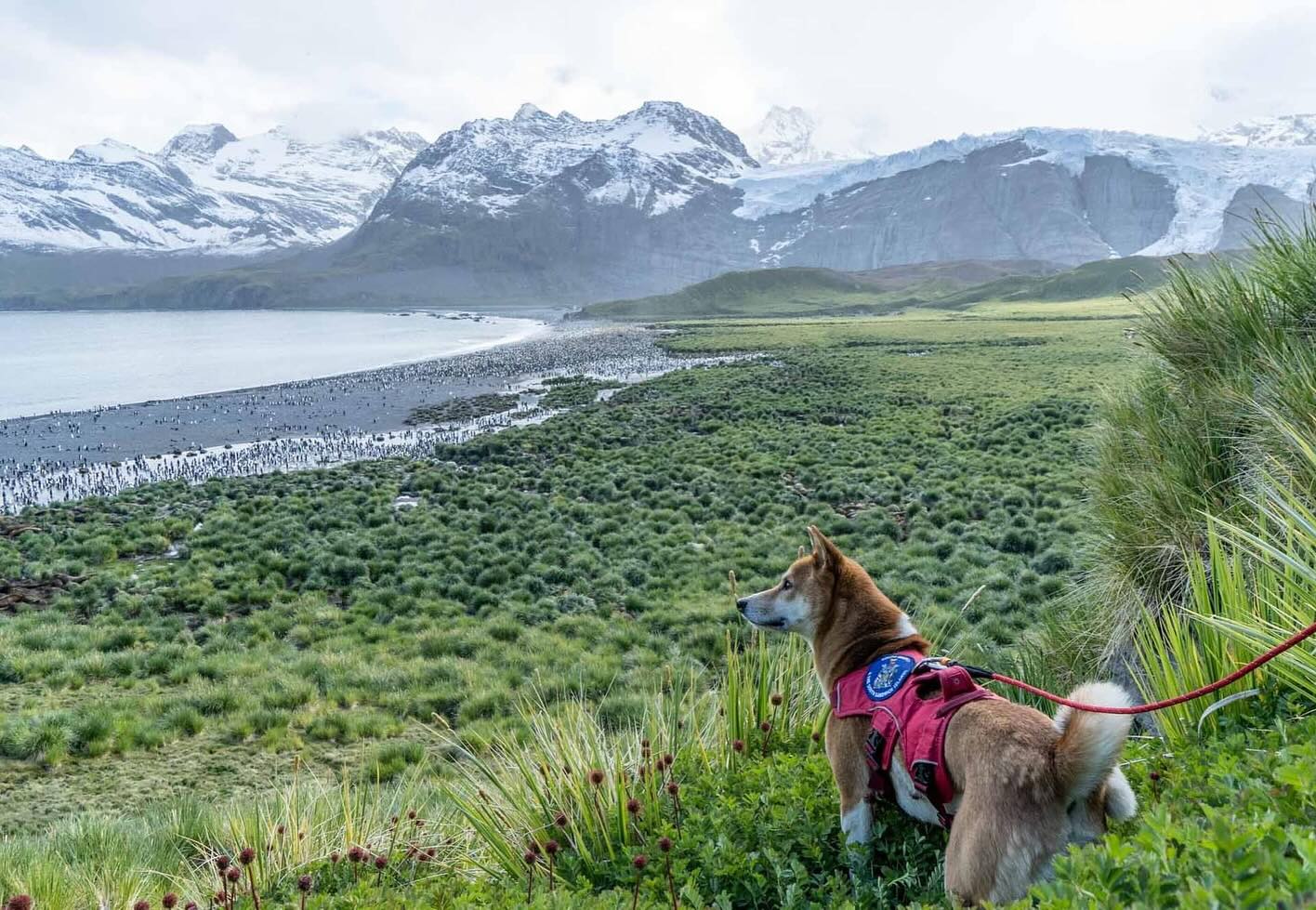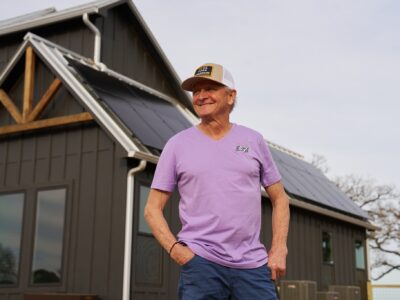In a world of division, polarity, and partisanship, when it feels as if common ground is a dusty relic of a distant past, it can seem at times like there is truly nothing upon which to agree.
One is either left or right, hot or cold, Yankees or Red Sox, Taylor or Beyonce. In a society of widening gulfs, there may be one last simple maxim the majority of the populace can accept: dogs are just great.
They aren’t known as “man’s best friend” for nothing, and one group, based out near Missoula, Montana, is taking their best friends to work with them all in a long-utilized method of collecting vitally important scientific data.

Photo Courtesy Working Dogs for Conservation
According to the website, Working Dogs For Conservation (WD4C) “is the world’s leading conservation dog organization. Whether it’s law enforcement, biosecurity, ecological monitoring, or environmental justice, WD4C consults, collaborates, and leads capacity building for detection, tracking, and discrimination dogs and handlers, all to make conservation happen around the world.”
Garden & Health had the opportunity to speak to some of the canine specialists and their scientist counterparts, specifically about how they implement these incredible four-legged friends into their field of conservation study.
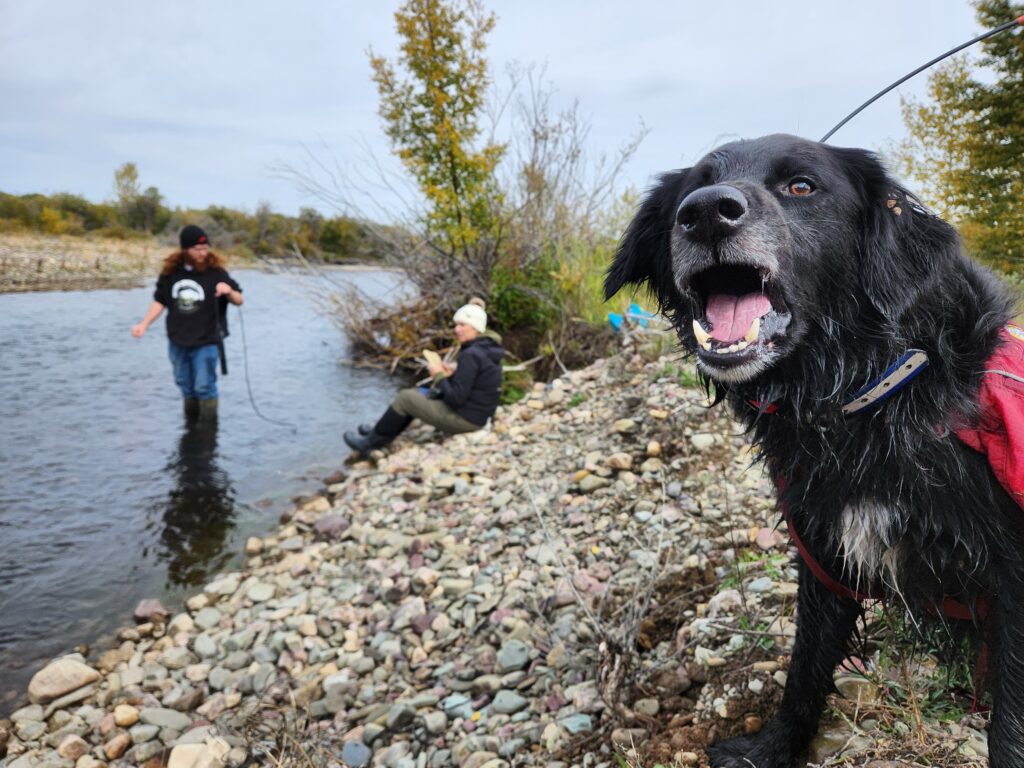
Photo Courtesy Working Dogs for Conservation
“We do a lot of different work,” Michele Guevara, one of WD4C’s canine specialists, explained. “The organization has been around for like 20 years now. And we’ve worked in a lot of different countries all over the world, doing a lot of different projects. And using dogs in a lot of different ways.”
“They look for invasive species; we do invasive plants; [and] we’ve had them find endangered species,” Guevara continued.
“And then now we’re kind of looking into this disease horizon to see if dogs can actually be used to detect disease and animals.”
A close colleague in her work, Souta Calling Last, who heads up her sister organization called Indigenous Vision, explains her view on the job WD4C is doing and her part in it from an Indigenous and scientific stance.
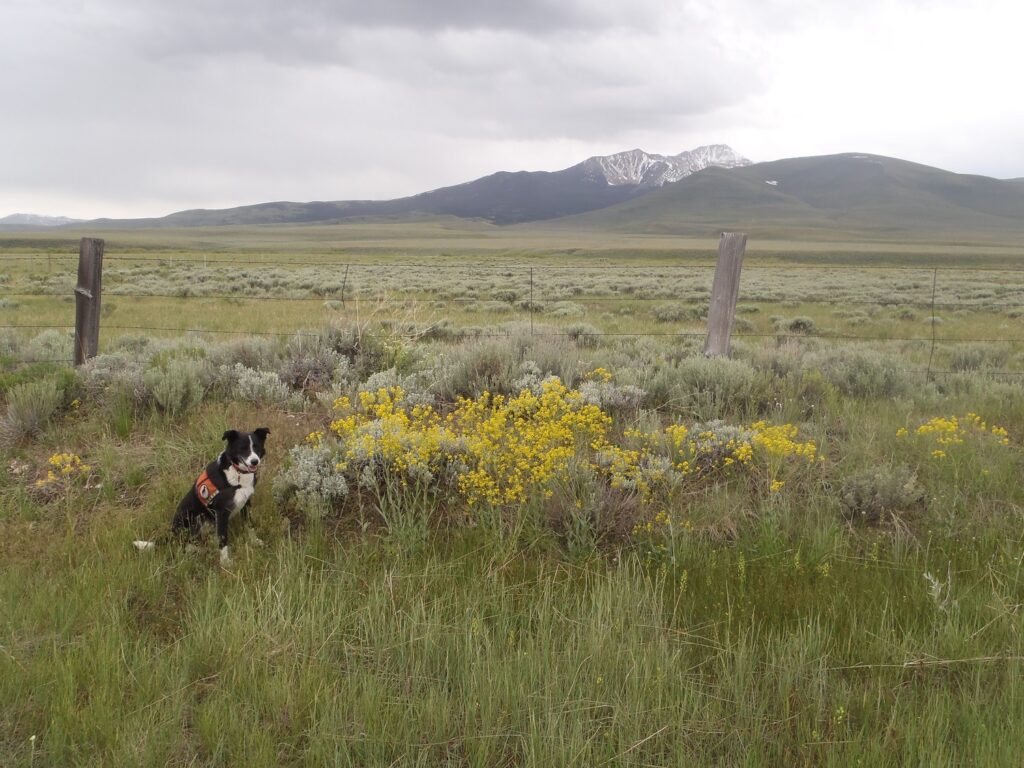
Photo Courtesy Working Dogs for Conservation
After explaining her years-long work in environmental justice as a specialist in mining contamination and cleanup, Calling Last is candid about what led her to her work today.
“It got really depressing,” she said, laughing. “So, I started highlighting environmental conservation projects, and then took my training and started my own land-based projects. And, then I found working dogs about three years ago, or they found me through a cultural humility training that my organization does, and they provided a way to do what I do in a culturally appropriate and like a minimally invasive way,”
Going on, Calling Last explained what this means from an Indigenous perspective.
“I used to have to look at the bio-accumulating levels of heavy metals in the environment through macroinvertebrates and a collection and incineration of their exoskeletons,” she said. “And that gives us an idea of how much heavy metals and contaminants that fish are eating and are entering into the food chain. [But] I couldn’t … culturally, that’s not an appropriate way to research for me; I’m not allowed to kill or eat aquatic life. And so I just kind of avoided that part of my training until I found Working Dogs.”
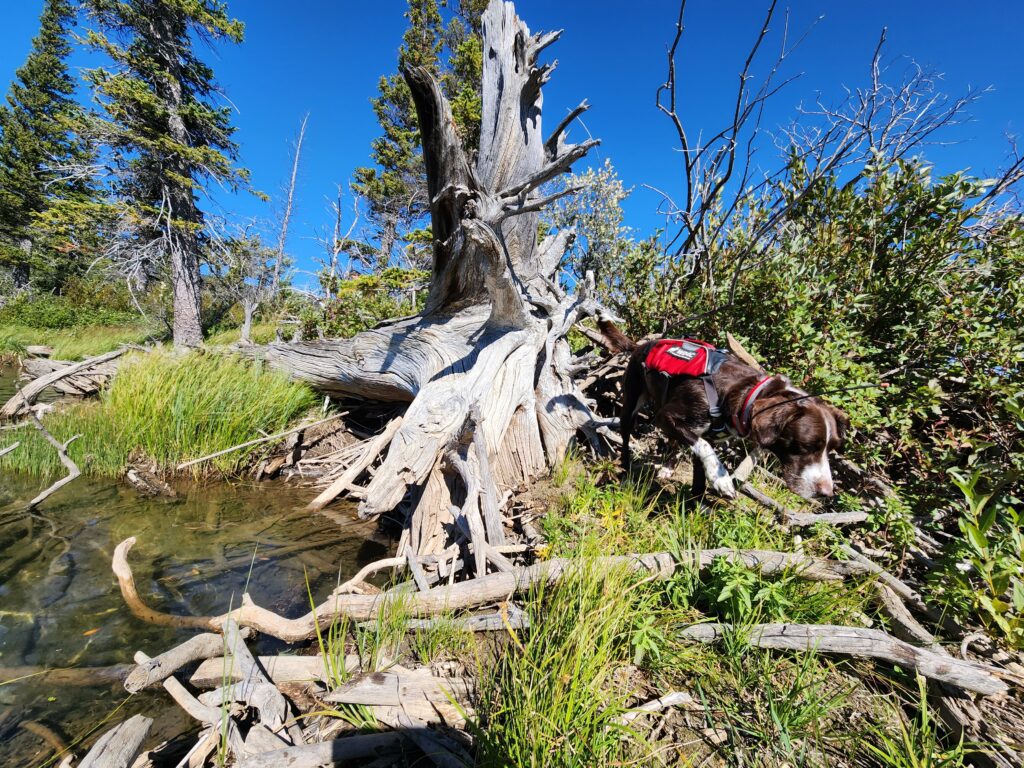
Photo Courtesy Working Dogs for Conservation
When asked to give an example of the difference in sample collection working with dogs provides over having a heavier, culturally inappropriate eco-footprint, Calling Last and Guevara both chime in.
“They’re able to use the dogs to find me an otter scat,” Calling Last continued. “And then we take that to the lab and see how much heavy metals and contaminants different contaminants are entering into the food chain, which are in our culturally significant areas and in areas that we also use as medicinal plant collection and harvesting areas.”
“And so some of the diseases that I’m looking at in the project that we’re working together on with Working Dogs for Conservation is tracking susceptibility to disease by looking at cumulative exposure to contaminants in a habitat,” Calling Last said.
Guevara picks up the thread and lays out how they choose and train these special dogs.
“Yeah, so most of our dogs are like rescue dogs; we get them from shelters,” Guevara said. “They tend to be these high-drive dogs that, you know, can’t really take no for an answer. And so they end up in shelters because people can’t really deal with them. But for us, that’s really great.”
“We look for dogs that don’t have prey drive, so they’re not going to be chasing animals or anything. But they are really obsessed with toys. And so we teach them this game that whatever we want to find … let’s say it’s the mink and otter scat, we show them that, and they smell it,” Guevara continued. “Then we teach them, if you find this, then you’re gonna get rewarded by playing with me with a ball, basically. And they absolutely love it! Because it’s all just one giant game to them every day of work, you know. And so they’ll go out, and they do this for hours, where we just walk along the rivers, and the dogs are so much better at finding things than we are.”
Photo Courtesy Working Dogs for Conservation
This type of scientific collection is maximally necessary on sacred lands Indigenous people have lived on for centuries as part of the ethos to leave a light eco-footprint and to take care of the land and one’s environment. The use of dogs to find animal excrement that is then taken and studied has greatly impacted the scientific process in the area without altering the natural environment in which WD4C and Indigenous Vision work.
Another of their counterparts, Ngaio Richards, a Ph.D. forensics and field specialist, explained a little further how this work is done on the Blackfeet reservation.
“The thing that I think is, is the there’s … it’s a real blend of artistry and science, which, in a sense, I think, the Blackfeet, the work that we do on the reservation is … that’s one of the neatest things about it,” Richards said.
“Because it’s a good embodiment of that site that, like, the really powerful science, and then also just the very human, and almost spiritual aspect that comes into play.”
Explaining further, Richards gives an insight into the history of human and canine working relationships.
“Humans have been partnering with dogs for, you know, hundreds of thousands of years. And then in terms of conservation detection, I mean, it, I would say maybe at least a good 100 years,” Richards said. “But what is new, for conservation detection as a recognized monitoring tool, I would say, in the last 10 to 15 years, it’s really started to pick up in terms of acknowledgment of the viability of it as a monitoring tool.”
Photo Courtesy Working Dogs for Conservation
The proliferation of dogs as a means to gather scientific evidence seems to be only growing. With organizations like WD4C — and their furry pals — leading the way, the future is bright for scientific discovery using a safe, natural, and culturally appropriate method.

